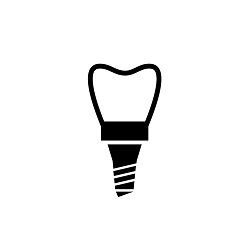New Dental Implant That Slowly Releases Antimicrobials Fights Biofilms
A team of researchers has presented their findings on this new implant, which uses a reservoir and a semi-porous implant surface, to deliver the drugs over time.

A new type of dental implant that slowly releases antimicrobial drugs may help prevent the formation of biofilms, new research shows.
A team of researchers has presented their findings on this new implant, which uses a reservoir and a semi-porous implant surface, to deliver the drugs over time. The study was published in European Cells and Materials.
According to the study, rough implant surfaces, which foster osseointegration, have become increasingly common for dental implants. The drawback of the rough surfaces is that it provides additional surface area, which consequently leads to increased opportunity for stubborn-to-treat biofilm infections.
The implant developed for the study, which is made of a titanium composite, contains an internal reservoir that can be filled with antimicrobials. The titanium composite material itself is integral to this implant’s success in staving off infection, the study says, because it enables the permeation of antimicrobials from the reservoir at a steady rate. Additionally, the study notes, “by adjusting the concentration of the feed solution, the amount of released compound can be fine-tuned.”
Prior to this study, implants have relied on antimicrobial coatings to stave off infection. These coatings are prone to breakdown and damage, the study says.
In this study, researchers filled the reservoir with chlorhexidine, an antimicrobial commonly found in mouth rinses. They manufactuyred the reservoir to delivier 5 mM of chlorhexidine over 10 days. After the study period, researchers used CFU counting and a scanning electron microscope to look for the presence of Streptococcus mutans biofilms.
“The metabolic activity of biofilm cells was significantly decreased (± 99 percent reduction) for all chlorhexidine feed concentrations as compared to blank feed solutions,” the study says.
Researchers point out that the reservoir can also be filled with antibiotics. By eliminating the need for a patient to take antibiotics orally, the reservoir delivery method could lead to more consistent dosing, diminishing the risk of antibiotic resistance. The implant can also be reloaded as needed, researchers say.
“Release of this antimicrobial compound prevents and eradicates microbial biofilm formation on the rough implant surface, decreasing the risk of development of peri-implant diseases,” the study concludes.
ACTIVA BioACTIVE Bulk Flow Marks Pulpdent’s First Major Product Release in 4 Years
December 12th 2024Next-generation bulk-fill dental restorative raises the standard of care for bulk-fill procedures by providing natural remineralization support, while also overcoming current bulk-fill limitations.